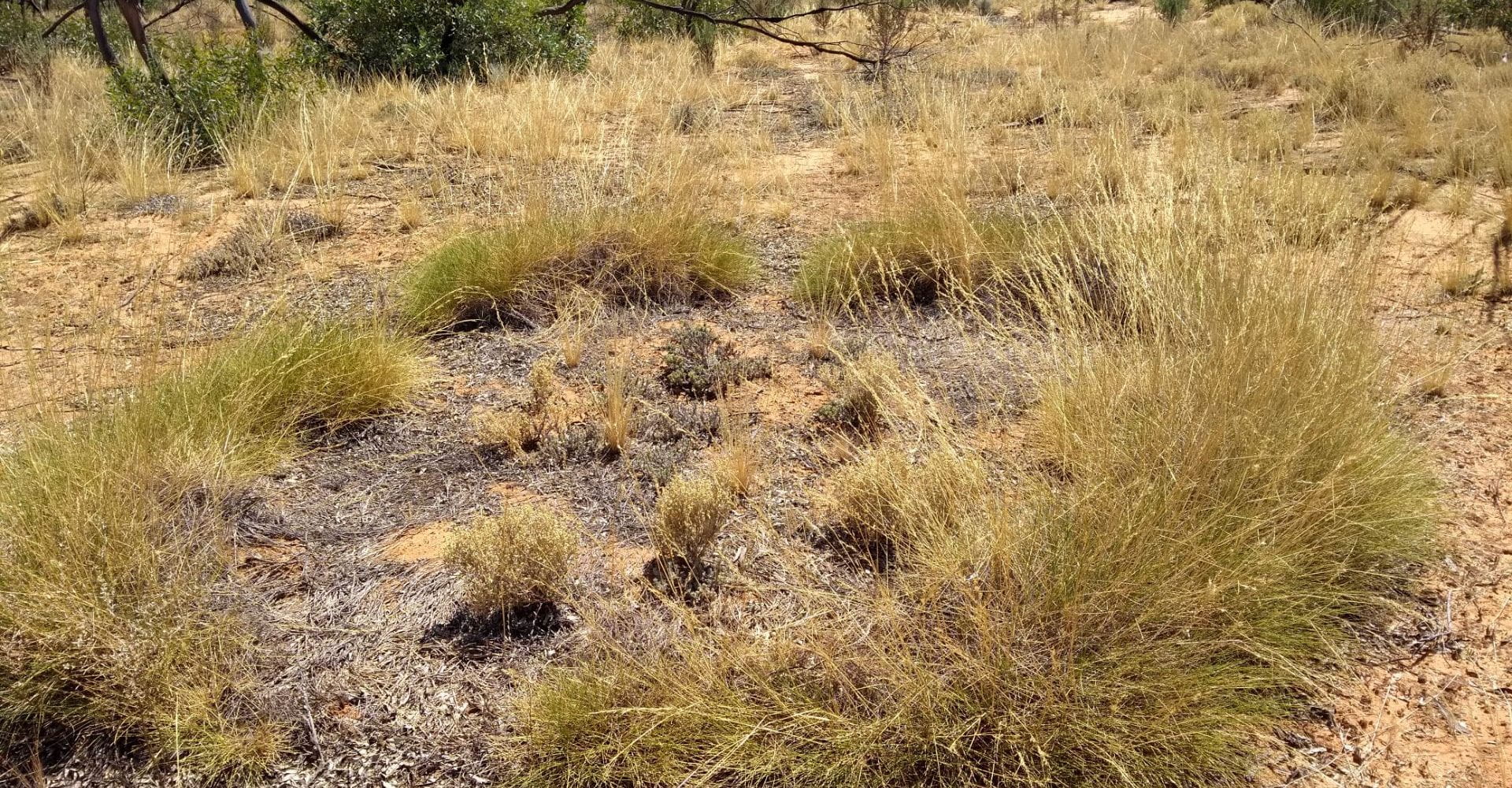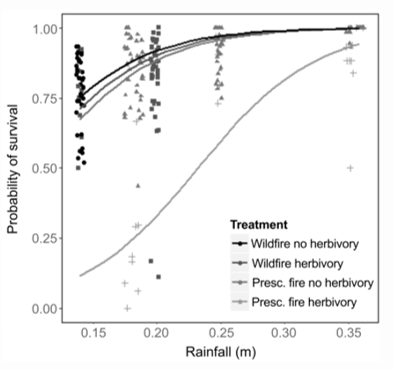
Interactions between fire, rainfall and herbivory drive plant vital rates
Kate Giljohann has a new paper on interactions between climate and disturbance regimes in Journal of Ecology
Kate and colleagues used an 11‐year dataset from a fire and herbivore exclosure experiment to model vital rates of the hummock grass,Triodia scariosa.
Importantly, this work showed that relatively small changes to disturbance regimes can substantially alter population processes, even in perennial resprouting species.
This research was a collaboration between scientists from the University of Melbourne, University of New South Wales and NSW Office of Environment and Heritage.
Read more below and email Kate for a full copy of the paper.
Summary
- Global change is threatening ecosystems and biodiversity world‐wide, creating a pressing need to understand how climate and disturbance regimes interact and influence the persistence of species. We quantify how three ecosystem drivers – rainfall, fire and herbivory – influence vital rates in the perennial resprouting graminoid, Triodia scariosa, a foundation species of semi‐arid Australia.
- We used an 11‐year dataset from a fire and herbivore exclosure experiment, to model flowering, post‐fire recruitment and the post‐fire survival of seedlings and resprouting plants. Regression modelling quantified the effect of rainfall, inter‐fire interval, fire type (wildfire or prescribed fire), grazing by herbivores (native and feral) and an interaction between fire type and herbivory on T. scariosapopulations.
- Rainfall, fire and herbivory had significant effects on post‐fire recruitment and the survival of seedlings and resprouting plants, including strong interactions between these drivers. Herbivory following wildfire had a minor effect, but in years of below‐average rainfall herbivory following prescribed fire had a large effect, reducing the survival of seedlings and resprouting plants by 20% and over 50% respectively, relative to post‐fire survival under average rainfall conditions.
- Variation in rainfall underpinned significant variation in post‐fire resprouting and seedling survival, thus we postulate rainfall primarily drives the dynamics of T. scariosa populations.
- Synthesis. This study highlights the importance of modelling interactions between key ecosystem drivers when predicting how changes in global climate and disturbance regimes influence plant vital rates. Relatively small changes to disturbance regimes can substantially alter population processes, even in perennial resprouting species. This work suggests that conservation of foundation species, such as T. scariosa, will benefit if fire management decisions are better integrated with inter‐annual weather forecasts and herbivore management.
Categories
- Uncategorised
